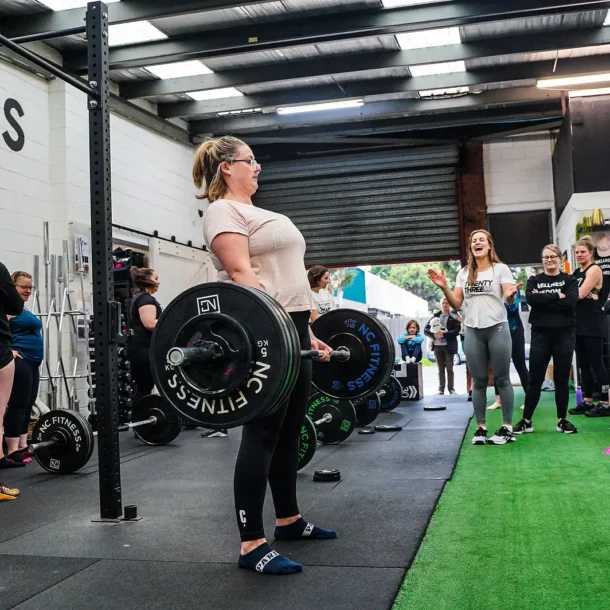


We love that 23W is a one stop for fitness. Want strength training? Yep, that’s our jam!
But we also recognise that for a lot of our members they also love to mix up their training with cardio too. And for good reason. You do not need to exist in just one camp. It is, however, important to find the right balance of strength training and cardio that you enjoy, suits your level of fitness/experience, fits your schedule and helps you reach your goals.
If your goal is to build or maintain strength, the gold ‘number’ of sessions is dependent on your level of fitness and what you are currently doing. For someone just starting out, this could be 2-3 sessions per week. If you are already training 3 times per week and already experienced some good ‘newbie’ gains but have found things have plateaued, it might be time to add another session. I have seen some personal training clients get stronger by training once per week, but progress is slow due to the limited exposure to the muscle stimulus.
Even if your primary goal is weight loss, keeping strength sessions in your program will help to minimise the amount of muscle mass you might lose in an energy deficit.
The frequency of your training will also depend on how much time you can devote to your training. We recommend building your week around your strength sessions and then adding other styles of training around it (if desired or required).
Devoting time to your training could be as few as 1-2 hours or as many as 5-6 hours. It is important to be realistic to set yourself up for success. It is also important to set aside time to plan your nutrition and lifestyle strategy too, to support the hard work you are putting into the gym. This is ESPECIALLY important if you have body composition goals in mind.
Recognise your starting point too. If you are currently doing nothing, 3 hours across the week is actually quite a lot. Do not compare yourself to your trainer or other’s in they gym, who have built up the strength and conditioning to be able to train 5+ hours a week.
In terms of program, the stereotypical upper/ lower body spilt may also not be the best choice. We recommend that if you are training 3 or less times per week that you hit full body workouts for the best results. That way you are ensuring you are hitting muscle groups frequently enough to drive change. In our group program we like to pair 2-3 exercises together for efficiency… unless we are hitting big lifts at heavier weights. In these circumstances we love straight sets so that our members can focus on going heavy and use their rest periods to ensure performance does not drop.
If you do not enjoy your training program, it is unlikely that you will make it part of your routine. If you prefer the sweaty stuff over lifting, you might be better off hitting the weights twice per week and adding in other styles of movement for enjoyment for your other sessions.
Take notice of how your body is feeling after different types of training. Are you developing sore knees, stiff hips? Do you feel energised?
When we chat about ‘cardio’ there are a few different options. If weight loss is a goal, it is important to consider your total daily energy expenditure. Tracking your steps will give you a good idea of how active you are during your day. While 10,000 steps per day is considered a gold standard, aiming to do a little more than you normally do will help. Hitting less than 5000 steps per day indicates that you are quite sedentary, which will mean you may need to diet harder (which generally is not very fun).
HIIT (High intensity interval training) can be an awesome addition to your week. This should be added if you enjoy this style of training or as a tool to facilitate and break through plateaus in weight loss.
HIIT can be performed a number of ways using a number of work to rest ratios. You can have set work:rest ratios, variable work:rest ratios, positive rest, negative rest, or any combination.
Our 23W style of HIIT is burn and boxing. In general, the longer you have been training, and the more fit you are, the more work you can do with less rest and the higher the intensity you can train at. You should be aiming to work as hard as you can during the allocated ‘work time’.
Adding Lower Intensity Steady State Cardio (LISS) is considered a leisure movement you enjoy—from walking to hiking to biking to yoga—and should be restorative, and enjoyable!
There is no right or wrong. Be reflective of your goals and your progress. If you have been following a regime for 4-6 weeks and are not experiencing movement towards your goals, this is a good time to chat to your coach or evaluate what you are currently doing.







